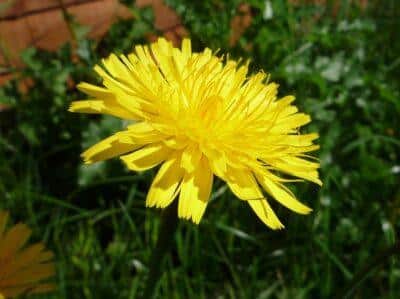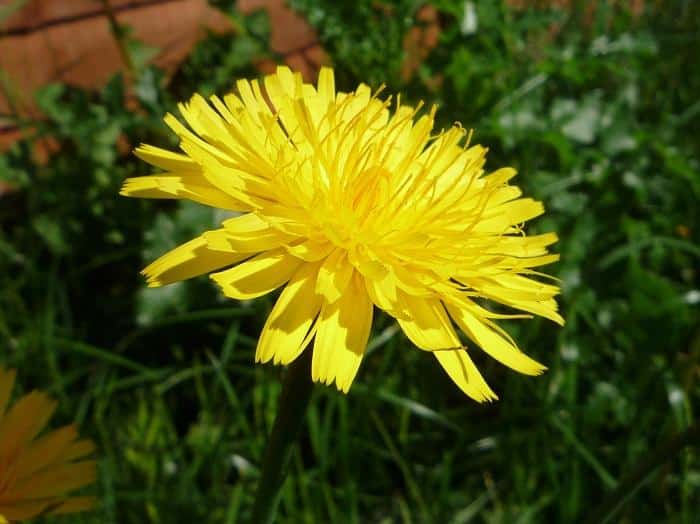
Cat’s ear (Hypochaeris radicata) is often confused with a dandelion — so much so that it is referred to as “false dandelion.” This look-a-like plant has similar structure, grows in a similar habitat, drives homeowners nuts when it pops up in well-manicured lawns, spits a white milky sap when snapped and has a similar nutritional profile to the dandelion. Flowers are high in lutein and total carotenoids, and the leaf extract has high levels of antioxidants.
To confuse the matter more, in some places in Europe cat’s ear and dandelion have names that when translated into English mean “dandelion.” However, as much as these two plants are alike, there are subtle differences that one can spot once they get good at wild plant identification.
Identification
One identifying characteristic of cat’s ear is its leaves; they are sharply toothed and more asymmetrical than the leaves of dandelion. They also have hairs on the top and the bottom, whereas dandelions do not any hair at all. Dandelions have one flower atop a hollow stalk while cat’s ears produce many flowers on one non-hollow stalk.
Low growing habit
Cat’s ears that make their home in lawns have adapted over the years to a growing habit that is close to the ground to prevent it from being cut by a lawnmower blade.
New “Survival Herb Bank” Gives You Access to God’s Amazing Medicine Chest
The leaves and stalk are below grass-cutting level, and they also compress the growth of competing plants nearby. This makes harvesting this plant a bit difficult.
Upright habit
There is an upright version of cat’s ear as well, and this plant is much easier to harvest. This form of the plant exists in areas where it is free to grow and where mowing does not occur. In fact, if you leave an area of a yard not mowed, it is likely that the upright version will begin to grow.
Growing season
The growing season of cat’s ears follows that of dandelions by about a month, and by mid-May to June, the plant hits a high growth period and the leaves expand and a stalk appears. In order to thrive, the plant needs full sun and moist conditions. Flowers may appear from May through November and go through three stages of development, from small to large and full. In contrast, a dandelion flower is always large and full.
Looking really closely
If you look at a dandelion and cat’s ear side by side, you may notice that the bracts on each plant are different. On a dandelion, there are two sets of bracts — one faces upwards and one downwards. On a cat’s ear plant, the bracts all face upwards and overlap like shingles on a roof.
Story continues below video
The puffball produced by cat’s ear plants is similar to the dandelion, apart from the fact that it is a bit smaller and less well-organized. Some have compared it to a dandelion puffball having a bad hair day.
Harvesting tips
The best plants to harvest will be in places where there is plenty of moisture and sunshine. Leaves, like the leaves of dandelions, are best when they are healthy. Be careful of where you harvest — if in a lawn, you will want the lawn to be clear of pesticides and chemical fertilizer. Upright forms of the plant are also much easier to harvest than flattened types.
When you harvest the leaves, it is best to use a pair of clean and sharp scissors. Be careful of the staining sap — wear old clothes! As you gather the leaves, keep the cut ends pointed downward and place them toward the corner of the bag. Be sure to keep your plants hydrated — get them to a cup of water as soon as possible.
If you want to use the fresh greens, you can chop them from the stems and dip them in cold water immediately. The water will wash the sap away and refresh the leaves. Place them in a salad spinner to dry.
Bud stalks
Bud stalks are an excellent food source and are easy to gather. The upper 4 inches or so are generally the most tender and tastiest. Harvest as you would the leaves, cutting with sharp scissors and placing them in a bag, cut ends down.
Eating cat’s ear
The leaves and roots of cat’s ear are less bitter than dandelions but can be enjoyed in the same manner as dandelions by mixing in a fresh salad, steaming, sautéing or boiling. It is best to eat them before the flowers appear, as after this they become kind of stringy and tough. Most of the plant’s bitterness is removed by cooking. The broth left from steaming is also great for soup stock.
Roots are generally smaller than dandelion but if you find larger ones they can be steamed and eaten. Flowers can be used in salads and sandwiches or thrown into stews, soups or egg dishes. Stems are tasty sautéed, like asparagus, and topped with your favorite sauce.
How do you use or eat cat’s ear? Tell us in the comments section below:
Sign up for Off The Grid News’ weekly email and get $600 worth of survival blueprints … free!









